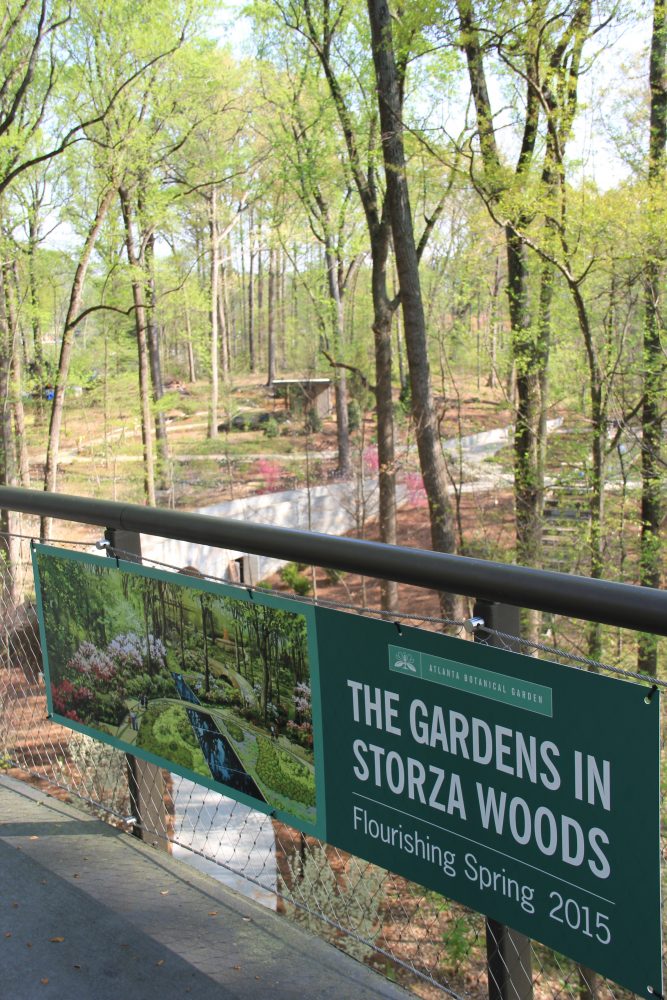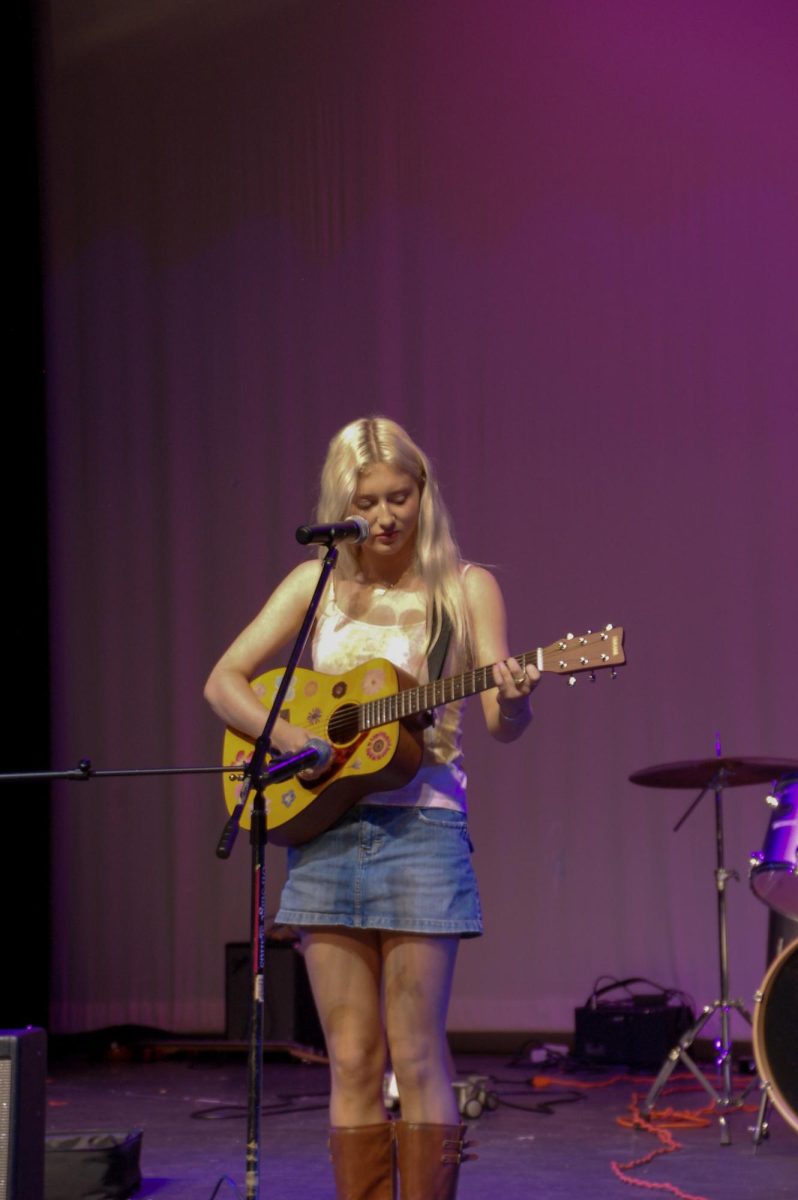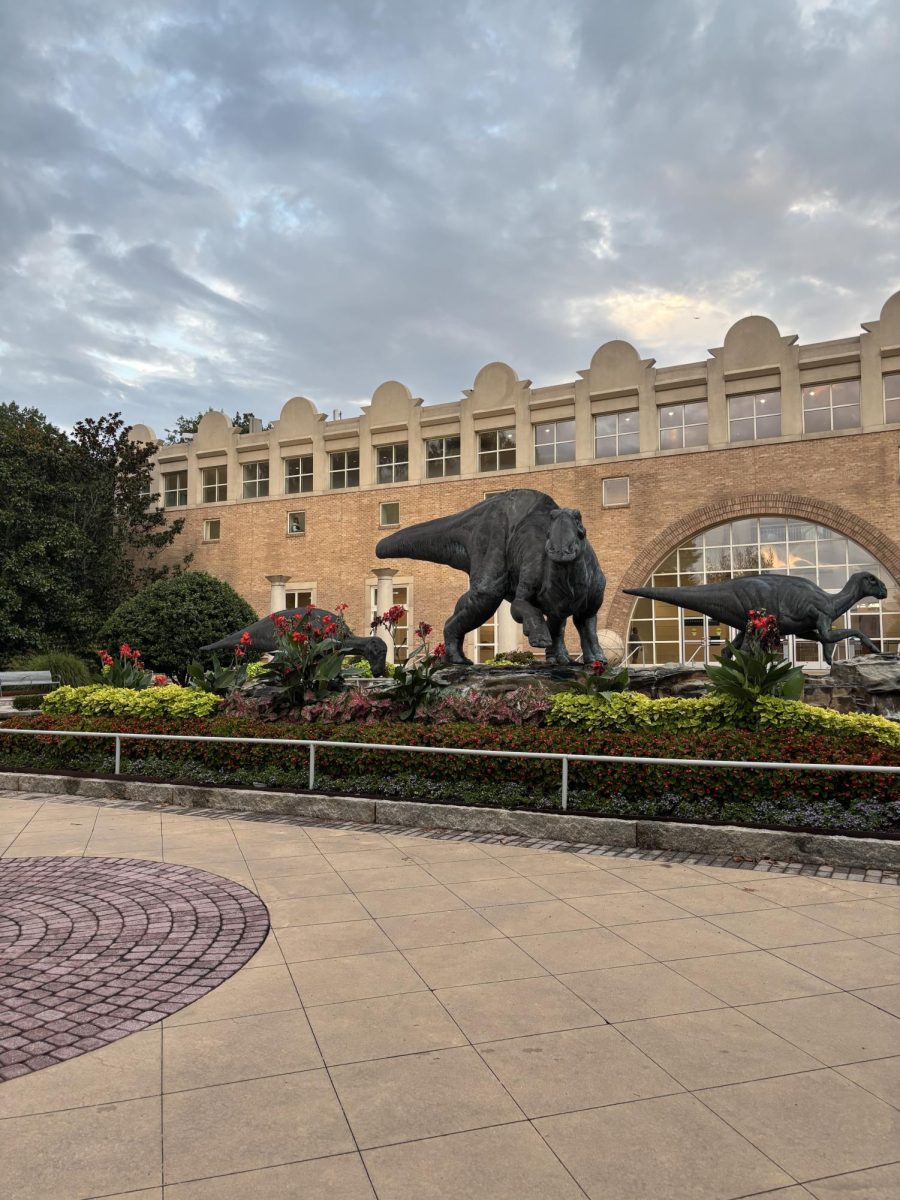Last summer the Atlanta Botanical Garden has begun a multimillion dollar project, the first project since the construction in 2010 when the the elevated Canopy Walk was installed. The project will expand the garden by incorporating 10 acres of Storza Woods, a mature hardwood forest in the northern part of Piedmont Park.
The Storza Woods are one of Atlanta’s last mature hardwood forests. The territory has been a property of Piedmont Park since 1904. In 1980 it was leased to the Atlanta Botanical Garden. According to AJC.com, for three decades, the abandoned Storza Woods was a problem for Piedmont Park and the Botanical Garden managers because the forested area provided cover for some unwanted: vandals and drug dealers. The situation significantly improved in 2010 when the construction of Canopy Walk, an elevated, almost treetop-touching path that connects the rest of the Garden with the woods. The 2015 project, the first construction project since the Canopy Walk was built in 2010, is targeting this exact area around the Walk, designing it to be open it for Botanical Garden visitors.
Botanical Garden’s Landscape Design and Planning Department will collaborate with Spurlock Poirier Landscape Architects and Smith Dalia Architects LLC to create an urban oasis located in the Stronza territory. Now visitors can enjoy the state’s largest tulip poplar; native azaleas, paths and bridges will be brought in new gardens. Meanwhile, designers will have to deal with a variety of unique challenges, among them the difficulty of gardening under the shade of towering trees.
In addition to impressive installing the gardens,, builders plan to add several significant architectural features into the area. Some of the highlights include a glade pavilion for classes and events and a water mirror and stairs, one of many water features that combined will span nearly 200 feet.

Different sources report that the price of Botanical Garden’s project is bounded between $2.3 and $7 million and will be funded by private donations. Garden officials want this construction to provide the visitors an urban oasis to rest while walking between and enjoying the forest and a huge variety of blooming flowers.
Construction started in the summer of 2014. Current visitors strolling along the Canopy Walk can clearly see newly built elevated paths, complicated water features and a bridge. The first opening of the new area is scheduled for spring.







